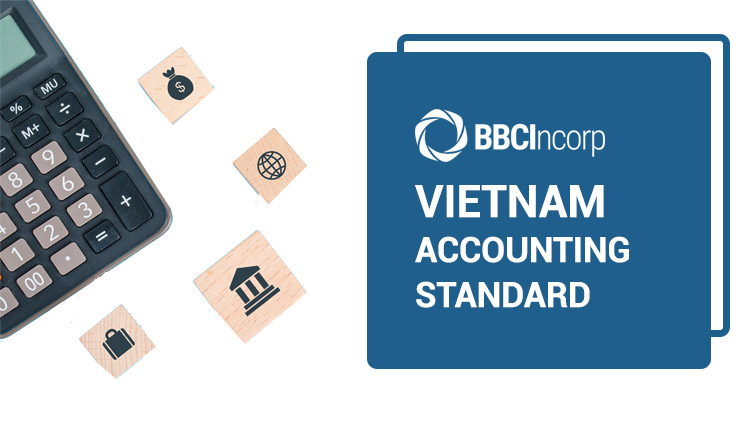
To provide guidance for foreign enterprises in Vietnam or foreign investors with an intention to invest in Vietnam, here is a Vietnam accounting standards guideline. Though Vietnam uses IFRS as a basis for its own system, yet there are significant and interesting differences that CFOs and investors should take a look at.
1. Keynotes in Vietnam Accounting Standards (VAS)
Unlike the International Financial Reporting Standards (IFRS), the standard-setting body of the VAS is the Ministry of Finance (MOF). Vietnam’s government currently has 26 VASs based primarily on the IFRS but with certain customizations to fit Vietnam’s circumstances. As an attempt to bring the two systems closer, the MOF recently issued Circulars, No 200/2014/TT-BTC, and No. 202/2014/TT-BTC, which enhance the comparability and transparency of these two systems.
1.1. Entities subject to VAS
All enterprises which are listed below, are required to comply with the general guidelines outlined under the Law on Accounting and all VAS releases by the MOF and government:
- Enterprises of all economic entities including wholly foreign-owned ones, branches and representative offices of foreign enterprises operating in Vietnam and are operated under Vietnamese Law
- Individuals business households and cooperation groups
- Accountants and other persons related to accounting
- Non- business enterprises and organizations (including with and without funding from the state budget)
However, the government shall specify the accounting contents of these following entities based on the basic principles in the Law of Accounting: Representative Offices of foreign enterprises in Vietnam, Individual business households, and lastly, Cooperation Groups.
1.2. Accounting period and timeline

All enterprises subject to the accounting law must prepare a compilation of accounting records on a monthly, quarterly, or annual basis in accordance with the accounting period defined under Accounting Law No.88/2015/QH13 as follow:
- Annual Accounting period: the calendar year (from January 1st to December 31st)
- Quarterly accounting period: 3 months (from the 1st of the first month of the quarter to the last day of the last month of the quarter)
- Monthly accounting period: 1 month (from the 1st of the month to the last of the month)
For newly established companies, the first accounting period starts from the issuance date of the Business Registration Certificate to the last date of monthly, quarterly, or yearly accounting period.
In case of business divestiture or dissolution, the final accounting period ends on the effective date of such decisions.
If the first or last annual accounting period is less than 3 months, a company can combine it to the next or previous accounting period as long as it does not exceed 15 months.
1.3. Language and currency requirement in VAS

Accounting currency as stipulated in Circular No.133/2016/TT-BTC is currency (i) primarily used in sales/purchases of goods and services (ii) have a great effect on selling prices and costs of business (iii) used as the currency of selling prices and payments of business costs.
Accordingly, a company can decide on its accounting currency while it can meet pre-specified criteria regulated by law. That said, it must notify its direct supervisory tax authority should it use foreign currency in presenting financial reports.
One important note is when a company issues its financial statements (FSs) for public use or submission to competent authorities, it must convert accounting currency to Vietnamese Dong (VND). Likewise, accounting documents in foreign languages must also be translated to Vietnamese in preparing FSs.
1.4. Key differences between VAS and IFRS
Even though the VAS is primarily based on the IFRS, there are some fundamental differences between the two that foreign investors should be fully aware of.
Presentation of Financial Statements
| IFRS | VAS |
|
|
As pointed out above, VAS only requires companies to perform analysis of changes in equity as part of notes to financial statements other than a separate report.
Cash Flow Statements (CFS)
Source of data in preparing CFS: IFRS, in deriving CFS mainly bases on the opening and ending balance of financial position statement. While VAS relies on general ledger cash accounts and bank deposits.
Method in reporting CFS: both IFRS and VAS specified two methods in reporting CFS for operating activities: direct and indirect method. That said, IFRS expresses a strong preference for direct method., while VAS holds the opposite view.
Classification of Cash flow: VAS has a separate set of rules governing cash flow activities of dividends and interests paid/received, especially for banking institutions and insurance companies. On the other side, IFRS brings more flexibility in classifying these streams of cash flow as investment or financing activities.
Inventories
In terms of inventories, both IFRS and VAS apply the normal costing method to calculate production costs. However, there are some differences that are listed below.
| IFRS | VAS |
|
|
(*) costs accumulated up to the time of acquiring assets
(**) the direct cost of commodities, including costs for material and labor involved in the production, excluding fixed costs
Chart of accounts
IFRS only provides overall guiding principles and general requirements in preparing and presenting financial statements. Meanwhile, a uniform chart of accounts for firms’ financial statements officially issued by the Vietnam MOF is mandatory for all accounting units. In detail, Circular No. 200/2014/TT-BTC issued in Dec 2014 is the latest legal document regulating national chart of accounts, including a standardized form for financial statement reporting.
2. Vietnam’s road map to IFRS
The Accounting – Auditing project has started in 2020 with a clear road map to 2030, according to the Department of Accounting and Auditing Regime – MOF.

There are three main stages in this project:
- Readiness Preparation: From 2019 to the end of 2021
- Pilot Implementation: From 2022 to the end of 2025
- Compulsory Implementation: After 2025
Roadmap to IFRS
From 2019 to 2021: Readiness Preparation
The MOF prepares necessities:
- Construct and establish guidelines for the application of IFRS
- Construct and establish compliance, application for all related units from 2020
- Promote and train VFRS for firms, auditing companies, universities.
- Choose 10-20 IFRS simple and fit Vietnam’s empirical conditions
- Choose some pilot units in 2019
From 2022 to 2025: Pilot Implementation
- Pilot units that are willing and are selected by the MOF can practice financial statements according to VFRS in this stage.
- Increase up to 30 VFRS
- Continue to build guidelines for the VFRS
- Continue to support firms beginning to VFRS compliance, universities in training VFRS
- Firms with 100% FDI that are willing and are selected by the MOF can also practice VFRS
After 2025: Compulsory Implementation
The MOF evaluates the demand and ability of enterprises as well as the actual situation to announce the compulsory date and conditions to start fully applied IFRS. The date and conditions might vary depending on the different types of enterprises.
Understanding and keeping posted about these differences between IFRS and Vietnam accounting standards are crucial for foreign enterprises. Foreign investors and other stakeholders need to be fully aware so they can correctly interpret financials under either international and Vietnam standards.
Disclaimer: While BBCIncorp strives to make the information on this website as timely and accurate as possible, the information itself is for reference purposes only. You should not substitute the information provided in this article for competent legal advice. Feel free to contact BBCIncorp’s customer services for advice on your specific cases.
Get helpful tips and info from our newsletter!
Stay in the know and be empowered with our strategic how-tos, resources, and guidelines.


